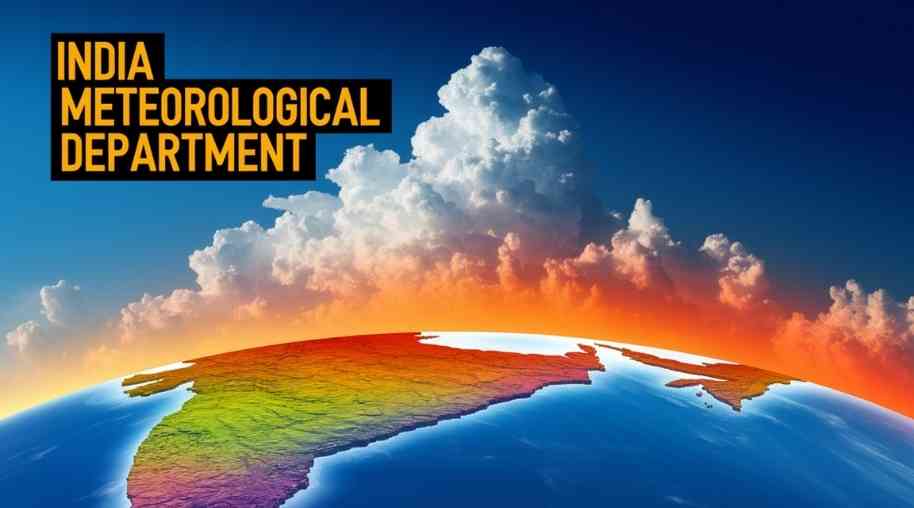IMD Full Form-India Meteorological Department
by Shashi Gaherwar
0 2251
India Meteorological Department: History, Functions, and Importance in Weather Forecasting
The India Meteorological Department (IMD) is the principal agency responsible for weather forecasting, climate monitoring, and meteorological research in India. Established in 1875, IMD operates under the Ministry of Earth Sciences and plays a vital role in disaster management, monsoon predictions, and climate change studies.

History of IMD
The IMD was founded on January 15, 1875, with its headquarters in Pune, Maharashtra. It was set up primarily to monitor tropical cyclones, rainfall patterns, and weather changes to aid farmers and policymakers.
- Over the years, IMD expanded its capabilities with advanced meteorological tools, satellites, and computing technology.
- It is now one of the most significant weather agencies globally.
Functions of the India Meteorological Department
IMD performs several crucial functions that impact various sectors of the economy, including agriculture, aviation, shipping, and disaster management.
- Weather Forecasting: IMD provides short-term, medium-term, and long-term weather forecasts for the general public, government agencies, and private entities.
- Monsoon Prediction: Since India’s economy is highly dependent on monsoons, IMD’s accurate forecasts help in agricultural planning and water resource management.
- Cyclone Warnings: IMD tracks cyclones in the Indian Ocean and issues timely warnings, reducing loss of life and property.
- Disaster Management Support: It provides crucial meteorological data for preparing and responding to natural disasters like floods, heatwaves, and storms.
- Climate Change Studies: IMD continuously monitors climate trends and publishes reports on global warming and extreme weather events.
- Aviation and Marine Forecasting: The department provides crucial meteorological services to aviation and maritime industries for safe operations.
Technological Advancements in IMD
Over the years, IMD has adopted advanced technologies to improve the accuracy of its forecasts.
- Doppler Weather Radars: Used for tracking severe weather conditions such as thunderstorms and cyclones.
- INSAT Satellites: Indian satellites that help in real-time weather monitoring.
- Numerical Weather Prediction (NWP) Models: Used for long-range forecasting and climate predictions.
- High-Performance Computing (HPC): Advanced supercomputers for improved data analysis and forecast accuracy.
IMD’s Role in Disaster Management
IMD plays a critical role in minimizing the impact of natural disasters by issuing timely alerts and advisories.
- Cyclone Alerts: The IMD’s Cyclone Warning Division (CWD) provides early warnings, enabling authorities to take preventive measures.
- Flood Forecasting: IMD collaborates with the Central Water Commission (CWC) to predict floods and issue alerts.
- Heatwave and Coldwave Warnings: These help in preventing casualties and ensuring public preparedness.
Challenges Faced by IMD
Despite its technological advancements, IMD faces several challenges:
- Unpredictability of Weather Patterns: Climate change has made forecasting more complex due to increased extreme weather events.
- Need for More Automated Weather Stations: Expanding automated weather stations would improve data collection and forecast accuracy.
- Improving Forecast Communication: Enhancing the clarity and accessibility of weather information for the general public remains a key area of improvement.
The India Meteorological Department (IMD) plays a crucial role in India’s weather forecasting, disaster management, and climate research. With continuous technological advancements, IMD is improving the accuracy of its predictions and helping the country prepare for natural disasters. As climate change continues to affect global weather patterns, IMD’s role in ensuring climate resilience becomes even more significant.
Further Learning Resources
If you’re passionate about building a successful blogging website, check out this helpful guide at Coding Tag – How to Start a Successful Blog. It offers practical steps and expert tips to kickstart your blogging journey!
For dedicated UPSC exam preparation, we highly recommend visiting www.iasmania.com. It offers well-structured resources, current affairs, and subject-wise notes tailored specifically for aspirants. Start your journey today!

Share:








Comments
Waiting for your comments